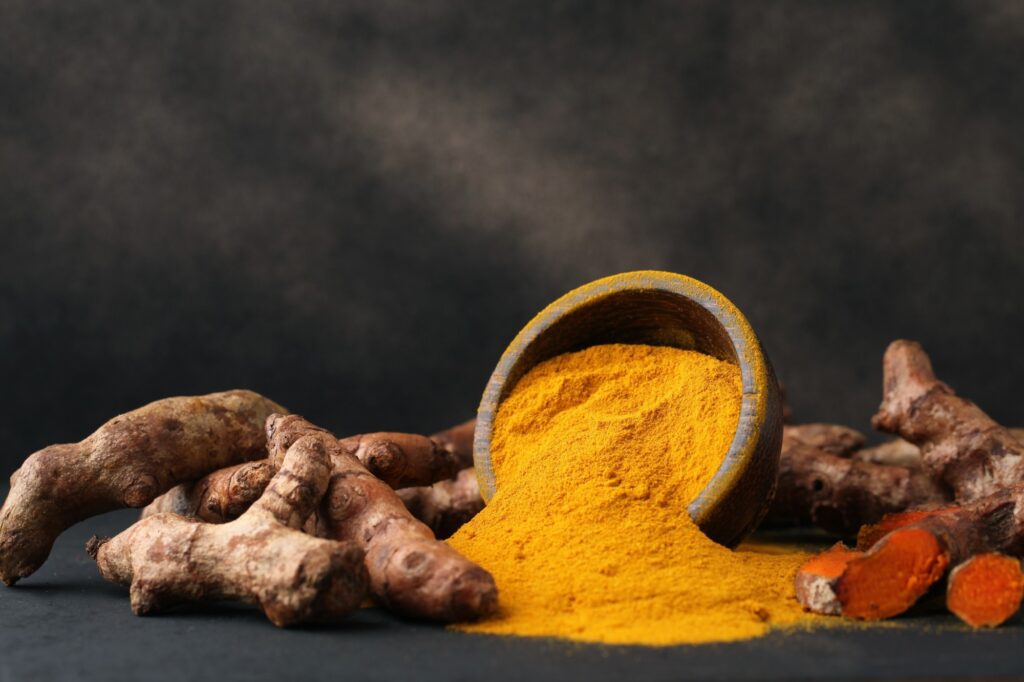In a recent review published in the journal Antioxidants, researchers explored the potential of nano-formulations to boost the bioavailability and bioactivity of curcumin and its metabolites to amplify their antioxidant properties and disease-preventing effects potentially.
Study: Enhancing the Bioavailability and Bioactivity of Curcumin for Disease Prevention and Treatment. Image Credit: tarapong srichaiyos/Shutterstock.com
Background
The roots of turmeric, containing the bioactive compound curcumin, have a long history of use in traditional medicine. Curcumin exhibits therapeutic potential in various diseases, including cancer, inflammation, and neurodegeneration.
However, its low bioavailability and rapid conversion to metabolites pose challenges. Curcuminoids, including curcumin, dimethoxycurcumin, and bisdemethoxycurcumin, display cellular regulatory effects with varying potencies.
Various nano-formulations have been developed to address curcumin’s bioavailability limitations, aiming to enhance its stability and uptake.
They include nano-emulsions, micelles, exosomes, phospholipid complexes, liposomes, biopolymer nanoparticles, and nanostructured lipid carriers.
Researchers in the present review explore the effects of curcumin and its metabolites and nano-formulations’ potential to amplify their disease-preventing actions.
Bioavailability of curcumin and curcuminoids
Curcumin undergoes significant metabolism in the liver and intestine, with limited distribution to other organs. Intraperitoneal administration demonstrates higher bioavailability than oral intake, which is particularly prevalent in animal studies.
Curcumin’s bioavailability varies significantly, with plasma concentrations ranging from nanomolar to microgram levels. Factors like dose, duration, and mode of administration influence bioavailability across species.
Despite its poor water solubility, oral administration of curcumin in rats and humans revealed high concentrations and persistence in the gastrointestinal tract and colorectal tissue, demonstrating stability in the acidity of the stomach.
In cell culture, curcumin shows greater stability in the presence of serum- or blood-enriched media than in serum-free media. Cell-based studies highlight the importance of administration routes in optimizing curcumin levels.
Increasing the bioavailability of curcumin with nano-formulations
Diverse nano-formulations aim to enhance curcumin’s bioactivity, leveraging improved solubility, stability, absorption routes, and co-administration strategies.
These formulations show promising outcomes in preclinical studies, with increased bioavailability, cellular uptake, blood-brain barrier permeability, and tissue distribution.
Nano-formulations present potential therapeutic applications across various diseases, including cardiovascular, liver, lung, neurodegenerative, cancer, metabolic, and gastrointestinal diseases.
Despite safety concerns associated with higher curcumin levels, most formulations demonstrate tolerability in clinical trials, emphasizing their potential to address diseases with inflammatory, oxidative stress, or aging components.
Antimicrobial action
Curcumin’s antimicrobial efficacy is prominent in topical and oral applications, hindered systemically by higher minimal inhibitory concentrations.
Nano-formulations enhance antimicrobial potential, while curcumin-microbiota interaction supports intestinal health and reduces inflammation.
Regulatory effects of curcumin and its nano-formulations
Nanotechnology-based systems, including micelles, liposomes, and nano-emulsions, enhance curcumin’s oral bioavailability, exhibiting improved absorption and stability.
Piperine, a natural agent co-administered with curcumin, significantly increases its oral bioavailability, demonstrating promise for enhancing the therapeutic potential of curcumin.
Combinations of curcumin with nano-formulations or bioactive compounds like quercetin, piperine, salsalate, and vitamin B6 show additive effects, providing effective strategies to augment curcumin’s bioactivity and combat various conditions, including colitis and tumorigenesis.
Curcumin exhibits therapeutic potential for liver diseases, demonstrating anti-inflammatory, antioxidant, and anti-fibrotic effects.
Nano-formulations of curcumin show increased efficacy in treating conditions like non-alcoholic fatty liver disease (NAFLD), promoting lipid metabolism, and reducing inflammation.
Studies also explore curcumin’s impact on adipose tissue, revealing its potential to inhibit adipocyte formation and ameliorate hepatic steatosis. Furthermore, under caloric restriction, curcumin supplementation, alone or with piperine, enhances fat loss and reduces inflammation in obese mice.
Curcumin’s nano-formulations promise to improve outcomes in myocardial infarction, ischemia, and hypertension.
Clinical trials suggest positive effects of curcumin on body weight, body fat, and metabolic markers in overweight/obese individuals, as well as in the prevention of cardiovascular diseases. Further research in clinical settings is warranted to optimize curcumin’s anti-inflammatory effects in human chronic inflammation.
Formulations like galactomannan complexes and natural nanoparticles address Curcumin’s limited brain uptake owing to the blood-brain barrier. They have shown neuroprotective effects on brain injury and ischemia.
In Alzheimer’s disease, curcumin is found to inhibit amyloid-Aβ production and may influence tau protein aggregation, as seen in preclinical studies. However, clinical trial results on the cognitive benefits of curcumin nano-formulations vary, warranting further investigation into factors like treatment duration, formulation, and dosage.
Potential safe concentration range and toxicity of curcumin
Curcumin is proven to be safe and non-toxic in in vitro, animal, and human studies. No toxicity was observed in humans, even at high doses of up to 8 g daily for three months.
Curcumin nanoparticles also demonstrate safety in breast cancer models, and curcumin exhibits cardioprotective effects against chemotherapy-induced toxicity in both in vitro and in vivo studies, highlighting its versatile and well-tolerated nature.
Conclusion
In conclusion, advances in nanoscience have addressed curcumin’s solubility issues, leading to nano-formulations with enhanced dispersion and therapeutic advantages.
Pre-clinical evidence consistently supports improved bioavailability and bioactivity, necessitating future human trials for optimized dosages and exploring combination therapies.
Comprehensive studies on the bio-interactions of curcumin with cellular structures are crucial to understanding the mechanisms behind the selective uptake of curcumin nanoparticles.


